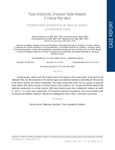
Please use this identifier to cite or link to this item:
http://ricaxcan.uaz.edu.mx/jspui/handle/20.500.11845/859Full metadata record
| DC Field | Value | Language |
|---|---|---|
| dc.contributor | 121534 | es_ES |
| dc.contributor.other | https://orcid.org/0000-0002-1513-4971 | - |
| dc.contributor.other | 0000-0002-1513-4971 | - |
| dc.coverage.spatial | Global | es_ES |
| dc.creator | Aguilera Galaviz, Luis Alejandro | - |
| dc.creator | Larios Cervantes, Alexis | - |
| dc.creator | Flores Reyes, Héctor | - |
| dc.creator | Baltazar, Victor | - |
| dc.creator | Gaitán Fonseca, César | - |
| dc.date.accessioned | 2019-03-26T16:56:58Z | - |
| dc.date.available | 2019-03-26T16:56:58Z | - |
| dc.date.issued | 2018-11-25 | - |
| dc.identifier | info:eu-repo/semantics/publishedVersion | es_ES |
| dc.identifier.issn | 1659-1046 | es_ES |
| dc.identifier.uri | http://localhost/xmlui/handle/20.500.11845/859 | - |
| dc.identifier.uri | https://doi.org/10.48779/s5ev-zk06 | - |
| dc.description | El traumatismo dental del área anterior de la boca en los dientes incisivos a nivel del tercio radicular, indica la extracción del órgano dental como un tratamiento electivo dependiendo de la gravedad de la lesión y el sitio donde se presentó. Este artículo reporta dos casos: uno en un paciente masculino joven de 13 años con trauma dental en los incisivos centrales y otro en una paciente de 18 años con reabsorción radicular en los incisivos centrales. Ambos fueron tratados con implantes trans- endodónticos en los dientes 2.1 y 1.1-2.2 en cada caso, respectivamente. El enfoque de tratamiento propuesto para cada caso proporcionó buenos resultados funcionales y estéticos. Los resultados clínicos y radiográficos después de 1 año fueron exitosos. | es_ES |
| dc.description.abstract | Dental trauma, mainly from the anterior area of the mouth in the incisor teeth at the level of the radicular third, has the extraction of the dental organ as an elective treatment, depending on the severity of the lesion and the site where it presented. This paper reports two cases: one in a young 13-year-old male patient with dental trauma in central incisors, and another in an 18-year-old female patient with radicular reabsorption in central incisors. Both were treated using trans-endodontic implants on teeth 2.1 and 1.1-2.2 each case, respectively. The treatment approach proposed for each case provided good functional and esthetic outcomes. Clinical and radiographic results after 1 year were successful. | es_ES |
| dc.language.iso | spa | es_ES |
| dc.publisher | Universidad de Costa Rica | es_ES |
| dc.relation.uri | generalPublic | es_ES |
| dc.rights | Atribución-NoComercial-CompartirIgual 3.0 Estados Unidos de América | * |
| dc.rights.uri | http://creativecommons.org/licenses/by-nc-sa/3.0/us/ | * |
| dc.source | ODOVTOS-International Journal of Dental Sciences, No. 21-1: 15-21, 2019 | es_ES |
| dc.subject.classification | MEDICINA Y CIENCIAS DE LA SALUD [3] | es_ES |
| dc.subject.other | Dental trauma | es_ES |
| dc.subject.other | Radicular resorption | es_ES |
| dc.subject.other | Trans-endodontic implants | es_ES |
| dc.subject.other | Trauma dental | es_ES |
| dc.subject.other | Resorción radicular | es_ES |
| dc.subject.other | Implantes trans-endodónticos | es_ES |
| dc.title | Trans-Endodontic Zirconium Oxide Implants: A Clinical Alternative | es_ES |
| dc.title.alternative | Implantes trans-endodónticos de óxido de zirconia: Una alternativa clínica | es_ES |
| dc.type | info:eu-repo/semantics/article | es_ES |
| Appears in Collections: | *Documentos Académicos*-- UA Odontología | |
Files in This Item:
| File | Description | Size | Format | |
|---|---|---|---|---|
| Trans-Endodontic Zirconium Oxide Implants.pdf | 149,77 kB | Adobe PDF |  View/Open |
This item is licensed under a Creative Commons License
